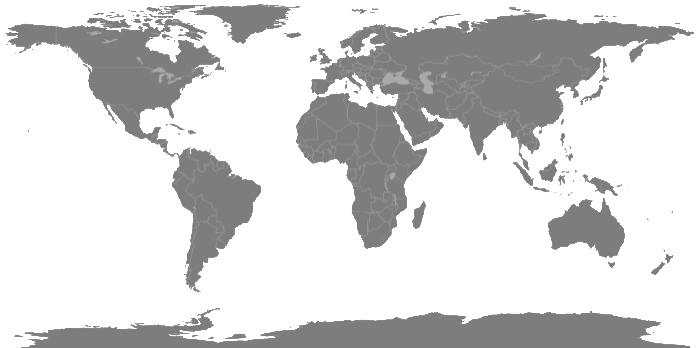
according to environmental determinism theory, the speed of cultural development was determined by the shape of the continents
Map Source: National Oceanic and Atmospheric Administration, State of the Climate: Extreme Events)

according to environmental determinism theory, the speed of cultural development was determined by the shape of the continents
Map Source: National Oceanic and Atmospheric Administration, State of the Climate: Extreme Events)
500 years ago, an Italian captain in the pay of the Spanish monarchs discovered the New World. Soon afterwards, other European explorers sailed northward along the coastline and mapped the shorelines of what we now call Virginia.
Of course it was "new" only to the inhabitants of Europe, Asia, and Africa. Humans evolved into a unique species in Africa, with an evolutionary path that is still being decoded with fossils and generic evidence. On our family tree, somewhere, are Australopithecus 4 million years ago, Homo habilis, Homo erectus, and ultimately Homo sapiens. There were some dead ends, including the Neanderthals (Homo neanderthalensis), though the legacy of extinct forms of human species may still be included in our current genes.
Neanderthals (Homo neanderthalensis) evolved in Africa perhaps 600,000 years ago. Some migrated north across the Red Sea into the Middle East, and dispersed from there across the continent. Our current species, Homo sapiens, established itself in Africa around 300,000 years ago. Groups of modern humans started to migrate out of Africa 250,000 years ago. Different waves of Homo sapiens left Africa, with some interbreeding with Neanderthals in Asia and/or Europe before dying out.
A Homo sapiens migration 50,000-80,000 years ago finally led to modern humans occupying Asia and Europe, replacing all other hominid species there and in Africa. All humans on Earth today have ancestors originally from Africa.
Humans migrated into North America starting over 20,000 years ago and quickly spread to the tip of South America. The "New World" of the Western Hemisphere has been occupied for less than 20% of the time that humans have been active in the "Old World."1
Humans have been living in what is now Virginia for roughly 500 generations. In those 15-20,000 years, sailing expertise had developed in many places. In recorded history, we know the most about the skills in Mediterranean and on the Chinese coast, but it's clear that the Scandinavians were also capable of long-distance journeys to Greenland and Newfoundland.
As documented in The Saga of Erik the Red and The Saga of the Greenlanders, Viking adventurer Thorfinn Karlsefni sailed from Greenland to North America 1,000 years ago. He was not the first; Leif Eriksson had arrived seven years earlier. After three years, Thorfinn and his family/crew abandoned their settlement and sailed to Iceland. His journey was completed 500 years before Columbus "sailed the ocean blue" in 1492.2
In the Pacific, Polynesians sailed 2,500 miles from the Marquesas Islands to Hawaii, purposefully bringing food plants and animals to colonize the islands over 1,500 years ago. That colonization may be part of an ancient tradition of sailing across the Pacific Ocean that dates back as much as 12,000 years. DNA evidence suggests that as Polynesians first colonized Pacific Islands, sailing from Samoa, they made it all the way to South America - and back.
Natural dispersal of seeds could explain the presence of South American sweet potatoes in Oceania, but DNA evidence indicates Polynesian voyagers visited what is now Columbia. Native American ancestry is identifiable in modern residents on Rapa Nui (Easter Island), Raivavae, Palliser, and the North and South Marquesas.
It appears Polynesian sailors met with ancestors of the modern Zenu people in Columbia around 1150 CE (Common Era), perhaps in just one visit. Children from that meeting, or perhaps from someone who sailed west from South America with the Polynesian explorers, were born on Fatu Hiva, an island in the South Marquesas. Descendants with common Native American genes then dispersed to other islands.3
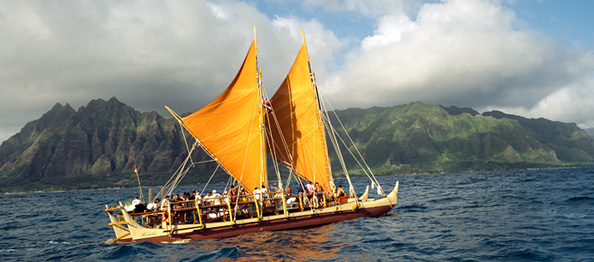
Polynesians settled Hawaii and other islands throughout the Pacific Ocean 1,000 years before Columbus sailed to the New World
Source: U.S. National Library of Medicine, A Voyage to Health)
Sailors from South America explored northward into the Caribbean, and reached up to the Bahamas. Evidently those explorers did not sail far along the eastern coastline of North America, or leave any evidence (such as pottery) if they did. Long-distance ocean travel was essentially unknown to the first residents of Virginia until the Spanish arrived, with the new technology of sailing ships.
On the eastern coastline of what became Virginia, indigenous peoples were able to travel in dugout canoes across the Chesapeake Bay long before Europeans arrived. Those canoeists must have ventured out into the Atlantic Ocean to explore towards the sun rising in the east, and to fish. However, there are no islands that could have been occupied and provide evidence of such travel. Some Native Americans must have been blown eastward by storms, but none lived long enough to reach Europe.
In Asia, the Chinese developed the most extensive capacity to sail and reached the Persian Gulf and Africa. Admiral Zheng He (Cheng Ho) made seven major voyages 75 years before Columbus reached America. However, the Ming Dynasty consciously abandoned ocean explorations.
The Chinese and the westerners had equivalent technology in the 1400's. The nation states of Europe competed through exploration and trade, advancing various shipping and military capabilities. The centralized government of China chose to conserve its culture and limit exposure to other societies. Though the Chinese initially developed gunpowder, the Europeans who arrived in ships had cannon and other weapons that quickly overwhelmed Chinese defenses.
In Europe, the sailing skills in the Mediterranean of people in Greece, Turkey, and North Africa were overcome by the oceanic sailing expertise of the nation states on the Atlantic Ocean. The Dutch focused on sea-based trade with Asia, after the overland Silk Road was closed, to access the silks of China and the spices of Indonesia. Portugal, Spain, England, and France looked westward, and sought power through expropriation of Native American wealth and creation of colonies in the New World.
Europeans "discovered" the New World, most clearly when Columbus sailed the ocean blue in 1492 - long after Polynesians visited South America and Vikings had visited what is modern Canada and New England. The direction of discovery could have been in the other direction - Native Americans could have developed sailing technology and sailed east to cross the Atlantic Ocean. Why did the Native Americans on the eastern edge of North America restrict their explorations to canoe trips along the coastline, and never develop sailing technology?
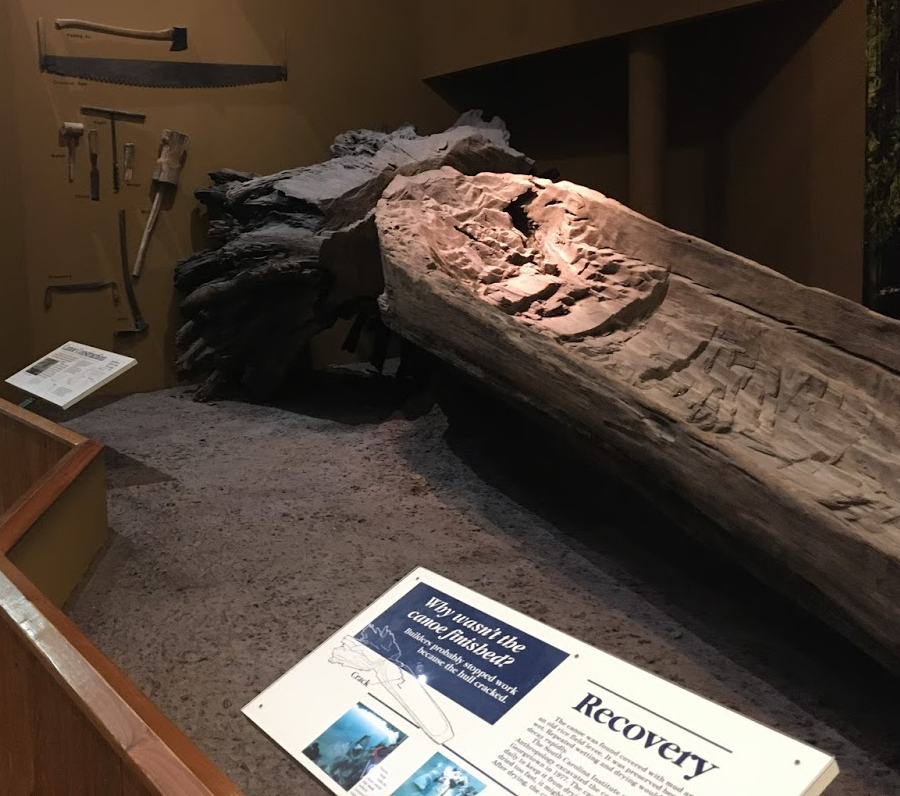
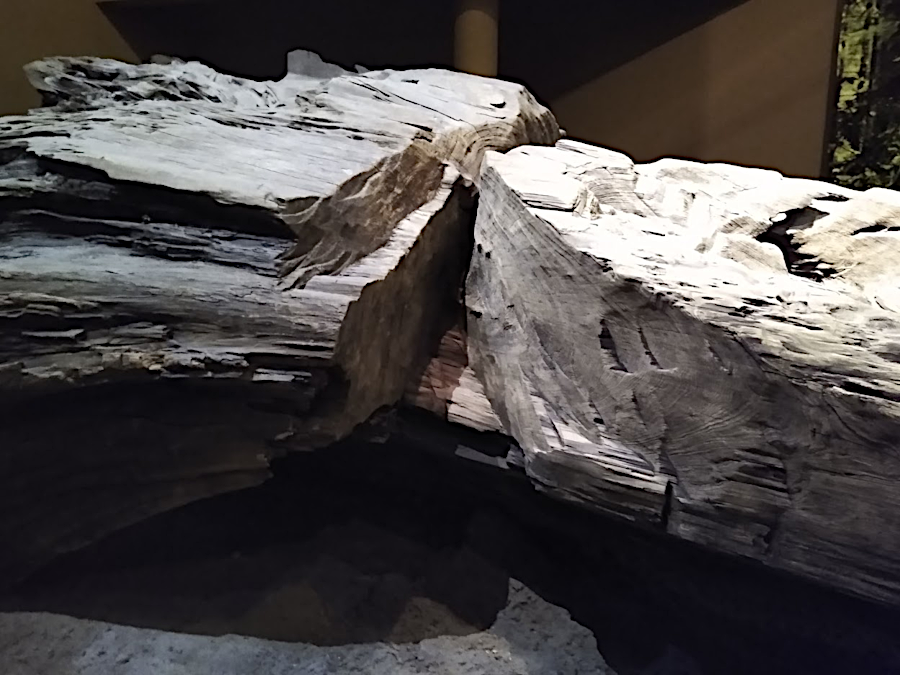
the South Carolina State Museum exhibits a canoe that was almost completely carved from a fallen tree, then abandoned because the wood cracked
In Guns, Germs, and Steel: The Fates of Human Societies, Jared Diamond suggests that the genetic capacities of people in the "Old World" and the "New World" were equivalent. The people who occupied Europe/Asia and the Americas were equally smart and equally creative as the humans who migrated into North America.
The biology was similar, but the humans in the "Old World" had one major geographic advantage. Diamond postulates that the shape of the continents determined the capacity of the occupants.
In Europe/Asia, food crops developed in one latitude (such as domesticated wheat) could spread far and wide at the same latitude; the continent is wide in the temperate zone. Lessons learned in agriculture in the Eastern Hemisphere could be applied by more groups of people living at common latitudes; development of new crops in one section of Asia or the Middle East could be utilized by other groups at the same latitudes with similar growing seasons.
The development of agriculture enabled a society to create a surplus of food. A surplus of food enables some people to stay out of the fields, to tinker with ideas and things. Tinkering led to specialized skills, and ultimately invention of new technologies, since people did not have to spend 100% of their time hunting, gathering, or farming. Thanks to surpluses of food, some specialists became sailors; new technologies enabled some cultures to explore new lands.
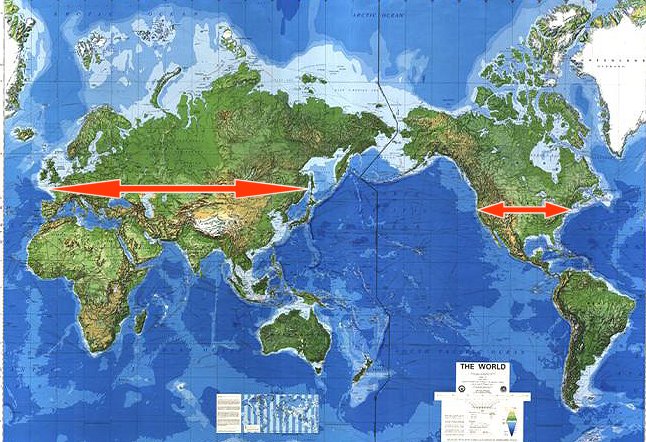
width of continents
Source: USGS World Map
In contrast, food crops developed at one latitude in North and South America could not be utilized over vast areas because the continents are "skinny" at the same latitude. Teosinte was domesticated 9,000 years ago in the Balsas River valley of Mexico to become maize (corn), and increased food led to higher population density. The Maya population in northern Guatemala and nearby Mexico and Belize reached 600 people per square mile in 600AD. That is roughly equivalent to the population density in 2010 of the suburban Hampton Roads jurisdictions of York County and the City of Chesapeake - and 300% higher than Virginia's average population density.
However, maize plants required many days to ripen. The only opportunity for expanding the acreage planted in a newly-domesticated crop was to go north or south of Central America, where day length and the growing season was shorter. Farmers in the colder latitudes north of the Rio Grande could not cultivate that new food source immediately.
Seeds of plants that grew in Mexico or Guatemala could be carried north and stuck in the soil at that new latitude, but getting them to ripen into a new crop was not automatic.
The climate to the north of Central America was too cold (or too hot in the deserts of California/Arizona/New Mexico/Texas), period of day length was too short, or the length of the frost-free season was too short. Plants that were genetically prepared for certain temperatures or patterns of sunlight in MesoAmerica could not be carried directly to Virginia or Argentina and grown successfully.
In the Western Hemisphere, prehistoric farmers had to spend thousands of additional years to adapt the food crop to different climate conditions before they could use a new food source on new land. At latitudes further north, there were fewer frost-free days. Ultimately, Native Americans developed strains of corn that could be grown in the Mississippi River valley and ultimately in Virginia. However, the time required in the Western Hemisphere to evolve types of corn adapted to shorter growing seasons delayed the creation of societies with surpluses of food.
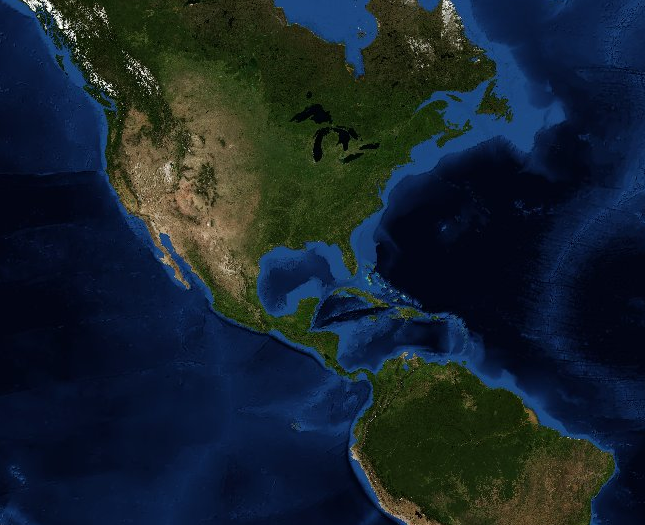
very little land is in the same latitude in Central America
Source: ArcGIS Online
According to Jared Diamond, agricultural advancements were limited in the Western Hemisphere because North and South America are not as "wide" (from east to west) as Eurasia. People living in Central America had the warmest and most-stable climate for agriculture in the Western Hemisphere - but when the Central American farmers developed a new crop, they could not migrate east or west and plant new lands. To the east was the Gulf of Mexico and the Caribbean; to the west was the Pacific Ocean.
"Western Hemisphere" is a relative term. Thanks to the dominance of English science in the 1800's, we refer to hemispheres as east or west of the Prime Meridian that runs through Greenwich (London). If the Chinese had continued their explorations of the oceans that started in the 1400's, the Prime Meridian might run through Beijing and Virginia might be in the Eastern Hemisphere. If Thomas Jefferson had succeeded in convincing everyone that America was the center of the globe, the Prime Meridian might run through Washington DC today.
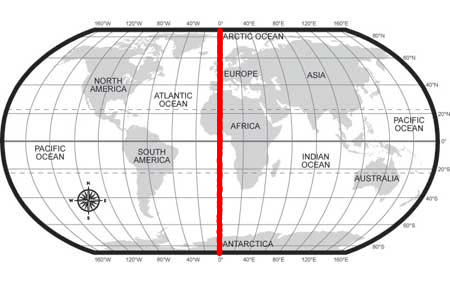
the Prime Meridian runs through Greenwich, not Paris or Washington
Source: US Mint, Where Are We?
Diamond's hypothesis is an example of the old theory of "environmental determinism," saying cultural evolution in North America was slowed by the physical shape of the continent. Sailing technology might have evolved over time in North America, but the Europeans and Asians created technologies at a faster pace because people on the European/Asian landmass had far more land within the same latitudes than in the Western Hemisphere.
Environmental determinism is controversial, in part because it can be used to justify European supremacy without resorting to old-fashioned racism. The supposed advantages of a wider Euro-Asian continent for evolution of complex societies with surplus food production are offset by large expanses of unproductive deserts and mountains, and all lands within the same latitude will not have the same climate. The relatively-slow development of advanced technology in the New World might reflect nothing more than later human occupation of the North American and South American continents.4
Cities and political systems beyond the family/tribe did not develop until societies shifted from a hunting-and-gathering lifestyle. Successful implementation of agriculture created "free time" for people to do something else besides hunt/gather for food. Specialization in the workforce and advances in technology led to historic (and modern) urbanization. Europe and Asia urbanized first. Those societies had a head start for developing the technology necessary for exploring the oceans. Paint
If the Europeans had not explored the oceans and discovered the Americas, the Native Americans may have created the technology and chosen to sail to Europe and Asia. If that had occurred, we would have a different world society today. Among other details, we would not be describing the Native Americans in Virginia as "Indians," based on the misunderstanding that the islands Columbus found in 1492 were part of India.
Native Americans began to "discover" Europe in 1493. when Christopher Columbus returned to Spain with captives. European sea captains seized Native Americans and brought them back to Europe on a regular basis in the 1500's and 1600's.
The first Native Americans to visit England voluntarily were Manteo and Wanchese. The 1584 expedition to Roanoke Island, funded by Sir Walter Ralegh and led by Philip Amadas and Arthur Barlowe, brought back the two Algonquians. They were curious about the English, and willing to risk their lives to learn more about the new culture with advanced technology.
The first Virginians to visit England were kidnapped, perhaps by Captain Samuel Mace, in 1603 on the Rappahannock River. They gave canoeing demonstrations on the Thames River that year.
The first Native American to travel voluntarily from Virginia to England was Namontack. He was sent by Powhatan in April, 1608 as a scout to determine the strength of the strangers who had started to settle in Powhatan's territory of Tsenacommacah. Powhatan's emissary spent eight weeks in London and 16 weeks on the Atlantic Ocean, traveling to and from England.
Namontack reportedly tried to document the number of people in London by carving notches in a stick, an exercise he quickly abandoned. He returned to Virginia with the Second Supply led by Captain Newport, gave his report to Powhatan, and was sent back to England in December 1608. On that second trip he was accompanied by Machumps, brother of Powhatan's wife Winganuske.
Their return trip on the Sea Venture was interrupted by that ship's wreck during a hurricane. Namontack and Machumps became the first Native Americans from Virginia to see Bermuda, but only Machumps made it back to Virginia with the shipwrecked colonists in 1610. The English records indicate Machumps murdered and buried Namontack on Bermuda, for reasons never determined.5
The environmental determinism presented by Jared Diamond and others assumes that physical geography shapes culture and development of new technology, in a form of predestination. However, advances in technology do not always lead to geographic exploration. The Chinese and the westerners had equivalent technology in the 1400's, but the nation states of Europe competed through exploration and trade while the centralized government and economy of China chose to conserve its culture and limit exposure to other societies.
More than natural environmental conditions will determine patterns of exploration. The Chinese stopped exploring the Indian Ocean and the Pacific Ocean in the 15th Century due to political reasons, rather than physical barriers or technological constraints.
Americans stopped sending humans to the moon after Apollo 17 landed on the moon in 1972. In the next space race, Chinese taikonauts may land on the moon ahead of space explorers from India - or perhaps even a return by American astronauts.
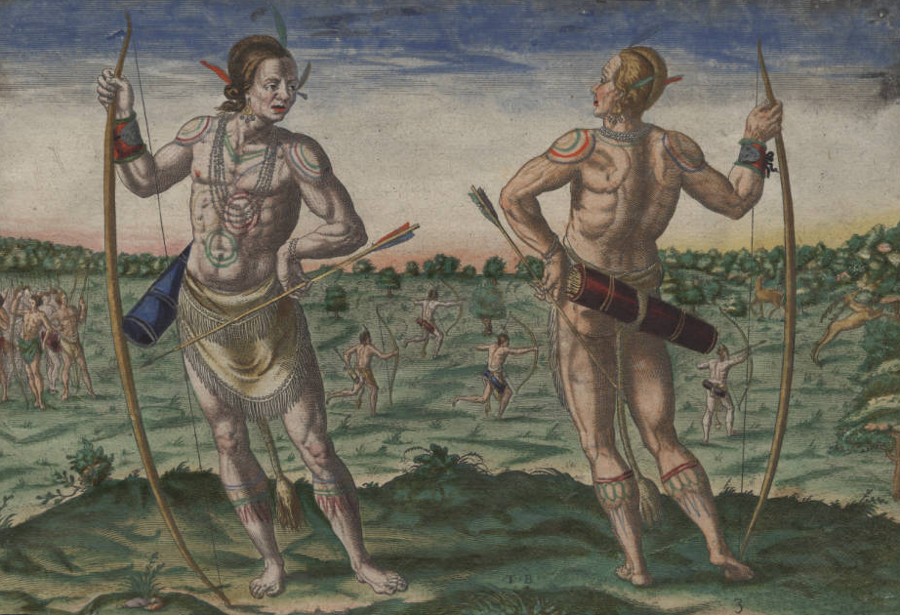
different societies have different priorities, just as different societies have different tattoos and definitions of beauty
Source: University of North Carolina, De Bry Engravings, Native American in Body